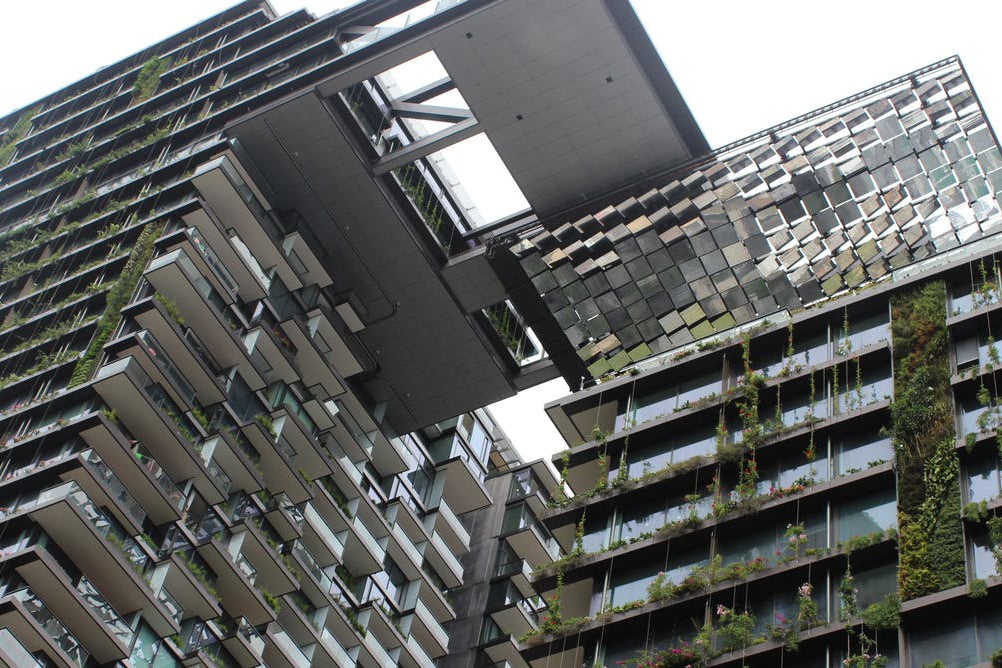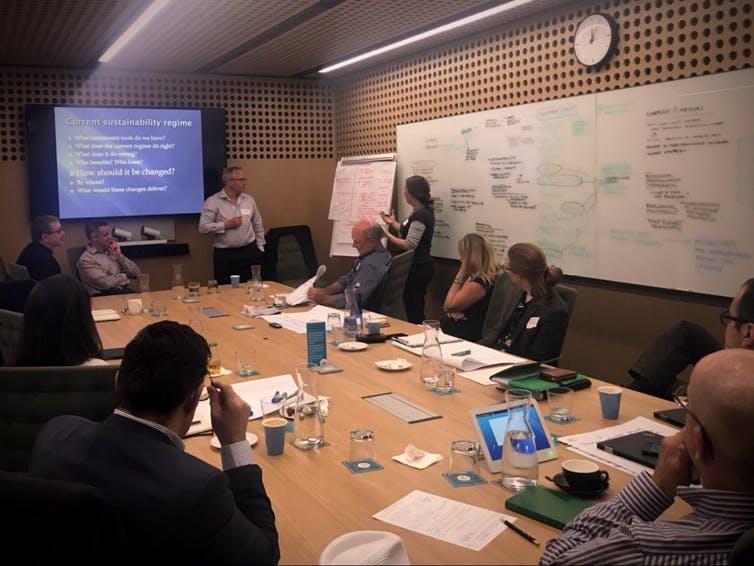Greenwashing the property market: why ‘green star’ ratings don’t guarantee more sustainable buildings
Buildings are central to creating more sustainable cities, and green ratings are often used to assess how well a building measures up against this goal. But the current system has serious flaws

Nothing uses more resources or produces more waste than the buildings we live and work in. Our built environment is responsible for half of all global energy use and half of all greenhouse gas emissions. Buildings consume one-sixth of all freshwater, one-quarter of world wood harvests and four-tenths of all other raw materials. The construction and later demolition of buildings produces 40 per cent of all waste.
The sustainability of our buildings is coming under scrutiny, and “green” rating tools are the key method for measuring this. In Australia, Deakin University’s School of Architecture and Built Environment recently reviewed these certification schemes. Focus group discussions were held in Sydney and Melbourne with representatives in the field of sustainability – including government, green consultancies and rating tool providers.
Two main concerns emerged from our review. Sustainability ratings tools are not audited.
Most ratings tools are predictive, while those few that take measurements use paid third parties. Government plays no active part.
Also, the sustainability parameters measured only loosely intersect with the building occupants’ sustainability concerns. Considerations such as access to transport and amenities are not included.
That’s the backdrop to the sustainability targets now being adopted across Australia. Australia has the highest rate of population growth of any developed country. The population now is 24.8 million. It is expected to reach between 31 to to 42 million people by 2056.

More buildings will be needed for these people to live and work in. And authorities will have to find ways to ensure these buildings are more sustainable if the targets now being adopted are to be achieved.
Over 80 per cent of local governments have zero-emissions targets. Sydney and Canberra have committed to zero-carbon emissions by 2050. Melbourne has pledged to be carbon-neutral by 2020.
So how do green ratings work?
Each green-rating tool works by identifying a range of sustainability parameters – such as water and energy use, waste production. The list of things to be measured runs into the dozens. Tools differ on the parameters measured, method of measurement, weightings given and the thresholds that determine a given sustainability rating.
There are more than 600 such rating tools worldwide. Each competes in the marketplace by looking to reconcile the credibility of its ratings with the disinclination of developers to submit to an assessment that will rate them poorly.
So, it is easy enough to find landmark developments labelled with green accreditations. It is harder to quantify what these actually mean.
Local governments, historically, have been keen to assure building quality through permits. Planning permits ensure a development conforms with city schemes. Building permits assess structural load-bearing capacity, health and fire safety.
All this is done off the plan. Site inspections take place to verify that the building is built to plan. But once a certificate of occupancy is issued, the Government steps aside.
The sustainability agenda promoted by Canberra has been grafted onto this regime. Energy efficiency was introduced into the residential building code in 2005, and then into the commercial building code in 2006. At first, this was limited to new buildings, but then broadened to include refurbishment of existing structures.
Again, sustainability credentials are assessed off the plan and certification issued once the building is up and running. Thereafter, government walks away.
We know of only one longitudinal energy performance study carried out on domestic residences in Australia. It is an as-yet-unpublished project conducted by a retiree from the the Commonwealth Scientific and Industrial Research Organisation, working with Indigenous communities in Far North Queensland.
The findings corroborate a recent study by Gertrud Hatvani-Kovacs and colleagues from the University of South Australia. This study found that so-called “energy-inefficient” houses, following traditional design, managed under certain conditions to outperform 6- and 8-star buildings.
Energy usage is but the tip of the iceberg. Genuine sustainability is about delivering our children into a future in which they have all that we have today.
Homeowners, on average, turn their property around every eight years. They are less concerned with energy efficiency than with real estate prices. And these prices depend on the appeal of the property, which involves access to transport, schools, parks and amenities, and freedom from crime.
Commercial property-owners, too, are concerned about infrastructure, and they care about creating work environments that retain valued employees.
These are all core sustainability issues, yet do not come up in the rating systems we use.
If government is serious about creating sustainable cities, it needs to let go of its limited, narrow criteria and embrace these larger concerns of “liveability”. It must embody these broader criteria in the rating systems it uses to endorse developments. And it needs an auditing and enforcement regime in place to make it happen.
Igor Martek and M Reza Hosseini are lecturers in construction at Deakin University. This article was first published in The Conversation (theconversation.com)
Join our commenting forum
Join thought-provoking conversations, follow other Independent readers and see their replies
Comments